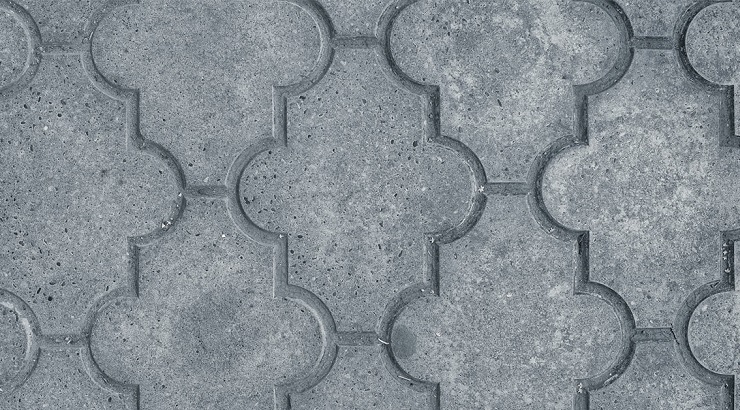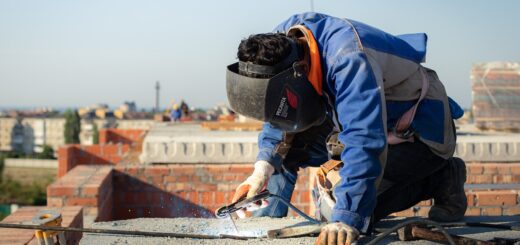Stamped Concrete | The Art of Transforming Surfaces
What Is Stamped Concrete?
It is a decorative technique that involves imprinting or “stamping” patterns and textures onto freshly poured concrete.
The result is a surface that mimics the appearance of natural materials such as stone, brick, slate, or even wood.
This process allows for limitless creativity in design, making it a popular choice for enhancing both outdoor and indoor spaces.
How Is Stamped Concrete Created?
The process of creating this type of concrete involves several key steps:
- Preparation: The area where the stamped concrete will be installed is carefully prepared. This includes excavation, grading, and the creation of a sturdy base.
- Concrete Pouring: Fresh concrete is poured onto the prepared surface. It’s important to work with professionals who understand the correct mix of concrete and additives for durability and aesthetics.
- Coloring: Integral color is often added to the concrete mix to achieve the desired hue. Additionally, surface color is applied using dry-shake color hardeners.
- Stamping: While the concrete is still in its plastic state (before it fully hardens), specialized stamps are pressed into the surface. These stamps impart textures and patterns.
- Release Agent: A release agent is applied to prevent the stamps from sticking to the concrete. It also adds depth and highlights to the surface.
- Curing: The stamped concrete is left to cure and harden.
- Sealing: Once the concrete has cured, it is sealed to enhance its durability, protect against stains, and enrich the colors.
Image Source: Construction Kenya
Advantages of Stamped Concrete
It offers a range of advantages that have made it a popular choice for a wide variety of applications:
1. Aesthetic Appeal
The primary reason people choose stamped concrete is its stunning appearance. Whether you want the look of natural stone for your patio or the warmth of wood for your interior floors, it can replicate it convincingly.
2. Durability
It is incredibly durable and long-lasting. When properly installed and maintained, it can withstand heavy foot traffic, harsh weather conditions, and the test of time.
3. Cost-Effective
Compared to using natural stone, brick, or wood, stamped concrete is a cost-effective choice that doesn’t sacrifice aesthetics. You get the look you want without breaking the bank.
4. Low Maintenance
Maintaining stamped concrete is relatively easy. Regular cleaning with mild soap and water, along with periodic resealing, is usually all that’s required to keep it looking pristine.
Design Options and Customization
Versatility in Patterns
Stamped concrete offers an extensive range of patterns and textures to choose from. Popular options include cobblestone, slate, brick, and more. You can select a pattern that complements your existing architecture or creates a striking contrast.
Vibrant Color Choices
The color possibilities are virtually limitless. Stamped concrete can be colored to match your existing decor or to create a unique focal point. Whether you prefer earthy tones or bold, vibrant hues, there’s a color for you.
Unique Customization
it is highly customizable. You can add decorative elements, borders, or even embed objects like seashells or glass for a one-of-a-kind finish.
Where Can Stamped Concrete Be Used?
The versatility makes it suitable for various applications:
- Patios: Create an inviting outdoor oasis.
- Driveways: Enhance your home’s curb appeal with a stylish and durable concrete driveway.
- Pool Decks: Make a splash with a slip-resistant, visually stunning pool deck.
- Interior Flooring: Bring the beauty to indoors for a seamless transition from outdoor to indoor spaces.
Stamped Concrete vs. Pavers: Which Is Better?
When choosing between stamped concrete and traditional pavers, it ultimately depends on your preferences and needs.
It offers the advantage of a continuous, seamless surface, while pavers allow for easier repairs if individual units become damaged.
Consider factors such as design, maintenance, and budget when making your decision.
It is more than just a building material; it’s a way to turn ordinary surfaces into extraordinary works of art. Its durability, cost-effectiveness, and endless design possibilities have made it a top choice for homeowners and businesses looking to make a lasting impression. Whether you’re revamping your outdoor spaces or considering a unique flooring option, stamped concrete offers a world of possibilities.




